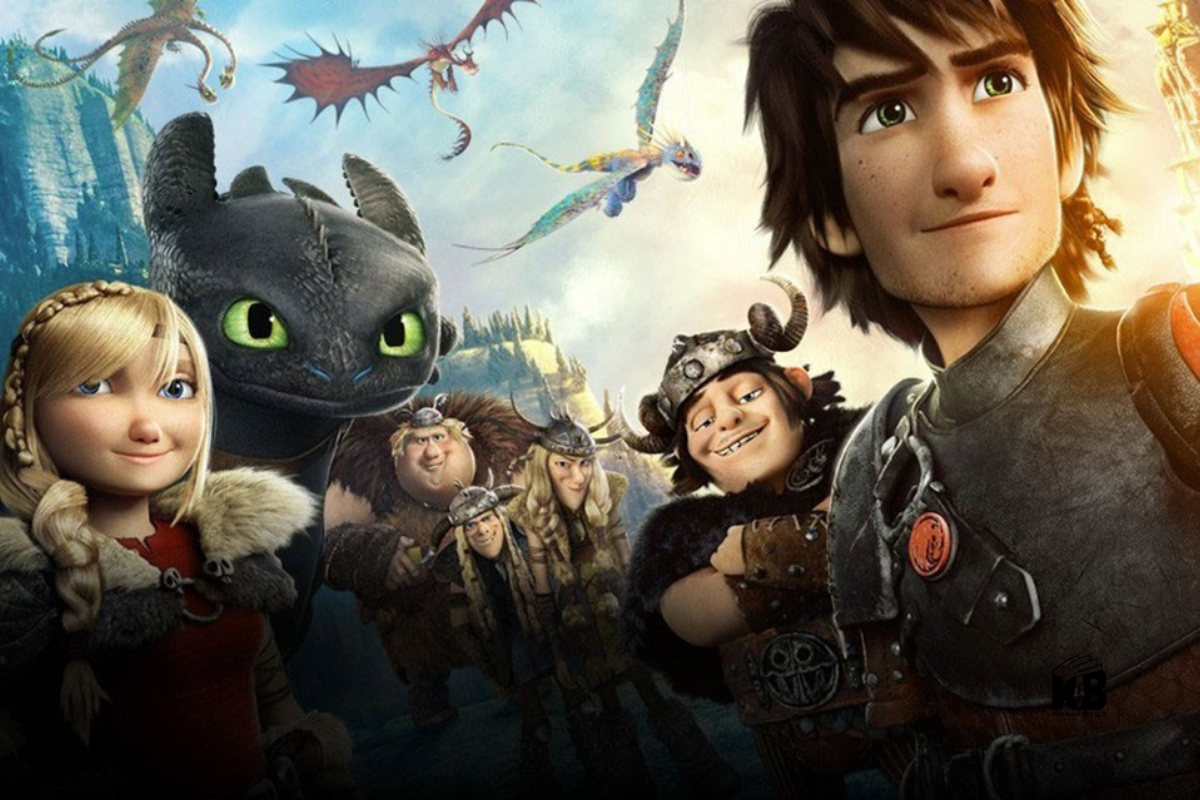How to Train Your Dragon, created by British author and illustrator Cressida Cowell, is one of the most beloved children’s book series of the 21st century. While the story of Hiccup Horrendous Haddock III has captured imaginations with its wit and adventure, a key part of its charm lies in the book’s distinctive illustrations. Cowell’s raw, humorous, and sketch-like art style isn’t just a background element—it actively shapes how young readers connect with the characters and story. These visuals stand in stark contrast to the polished aesthetics of the DreamWorks movie adaptation, creating a unique split between the book and film worlds.
Illustrations in the Original Books by Cressida Cowell
Cressida Cowell not only wrote the How to Train Your Dragon series but also illustrated it herself. Her artwork is intentionally rough, childlike, and filled with energy—designed to feel as if Hiccup himself sketched the drawings in a notebook. This approach helps immerse readers into the story by blurring the line between character and creator.
The illustrations feature:
- Loose linework and asymmetrical forms, echoing a young Viking’s messy journal.
- Handwritten captions and sound effects that add humor and personality.
- Expressive faces and dynamic poses, helping young readers connect emotionally with dragons and humans alike.
Cowell’s illustrations aren’t polished or technically refined, but that’s exactly the point—they capture imagination and raw creativity. This visual tone supports the narrative’s quirky humor and underdog themes, making the books visually appealing and approachable for children, especially reluctant readers.
How the Book Illustrations Compare to the Movie Adaptation
The visual difference between the original How to Train Your Dragon books and the DreamWorks animated films is stark. While Cressida Cowell’s illustrations are deliberately rough, childlike, and infused with hand-drawn spontaneity, the movies present a fully rendered, cinematic world built with 3D animation and visual realism.
Key differences include:
- Art Style: The books use loose ink sketches, while the movies feature detailed textures, lighting, and digital animation. Cowell’s illustrations prioritize charm and imagination; the films aim for immersive spectacle.
- Character Design: In the books, Hiccup and Toothless look much more basic—Toothless is small and lizard-like, far from the majestic Night Fury of the films. The redesigns in the movie were made to appeal to a broader, older audience and fit the tone of an action-adventure.
- Tone and Mood: Cowell’s visuals are whimsical and comedic, matching the book’s diary-style narration. The films lean into epic storytelling, and the visuals reflect that with sweeping landscapes and dramatic scenes.
Despite the contrast, both formats succeed in their own right. The illustrations in the book emphasize personal creativity and humor, while the film’s visuals deliver cinematic grandeur. Together, they offer complementary experiences of the same core story.
Artistic Style and Visual Impact on Readers
Cressida Cowell’s illustrations play a crucial role in how young readers engage with the How to Train Your Dragon series. The loose, sketchbook-like visuals feel personal and accessible, making the books feel like a character’s journal rather than a polished publication. This stylistic choice breaks down the barrier between reader and story.
Impact on readers:
- Encourages Creativity: The informal, doodle-style drawings inspire children to create their own sketches and stories. They demonstrate that art doesn’t have to be perfect to be powerful.
- Enhances Comprehension: Visuals help young readers—especially those who struggle with long blocks of text—understand action, emotion, and humor more easily.
- Supports Character Connection: Cowell’s expressive linework brings out the quirks of characters like Hiccup and Toothless. Even dragons have unique personalities shown through their illustrated gestures and expressions.
- Makes Reading Approachable: The playful design, combined with handwritten notes and chaotic layouts, mimics a child’s way of processing the world—making the books relatable and engaging.
This artistic direction sets the series apart from traditional children’s books, showing that authenticity in storytelling and illustration often resonates more deeply than polish.
Custom Illustration Services for Authors
For authors inspired by the whimsical, expressive style of How to Train Your Dragon, having the right illustrator can make all the difference in capturing that same sense of imagination and personality. Whether you’re working on a children’s book, early reader chapter series, or a creative journal-style narrative, custom artwork should reflect your characters’ tone and the world they inhabit.
KidsBookArt.com (operated by KidsBookArt LLC) is a resource worth considering. They specialize in illustrations for children’s books and offer tailored styles ranging from playful line drawings to vibrant, full-color pages. Their work is well-suited for authors looking to:
- Create hand-drawn or sketchbook-inspired visuals similar to Cressida Cowell’s.
- Add humorous character illustrations that engage reluctant readers.
- Develop a consistent artistic identity across an entire book series.
Just as Cowell’s illustrations deepen the reader’s connection to Hiccup’s world, the right custom artwork can enhance a story’s tone, reinforce its themes, and give young audiences a memorable visual experience.
Conclusion
The illustrations in How to Train Your Dragon are more than visual decoration—they’re a core part of the series’ identity. Cressida Cowell’s raw, humorous sketch style complements the voice of her main character, bringing readers directly into Hiccup’s chaotic Viking world. In contrast, the DreamWorks adaptation transforms that vision into a polished cinematic universe, offering a different yet equally compelling experience.
For readers, especially children, the book’s illustrations offer an invitation to imagine, doodle, and engage. For authors, they serve as a reminder that artwork doesn’t have to be perfect—it has to feel honest. And for those looking to create stories with the same kind of heart and visual appeal, partnering with illustrators like those at KidsBookArt.com can help bring a unique world to life.

